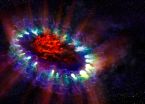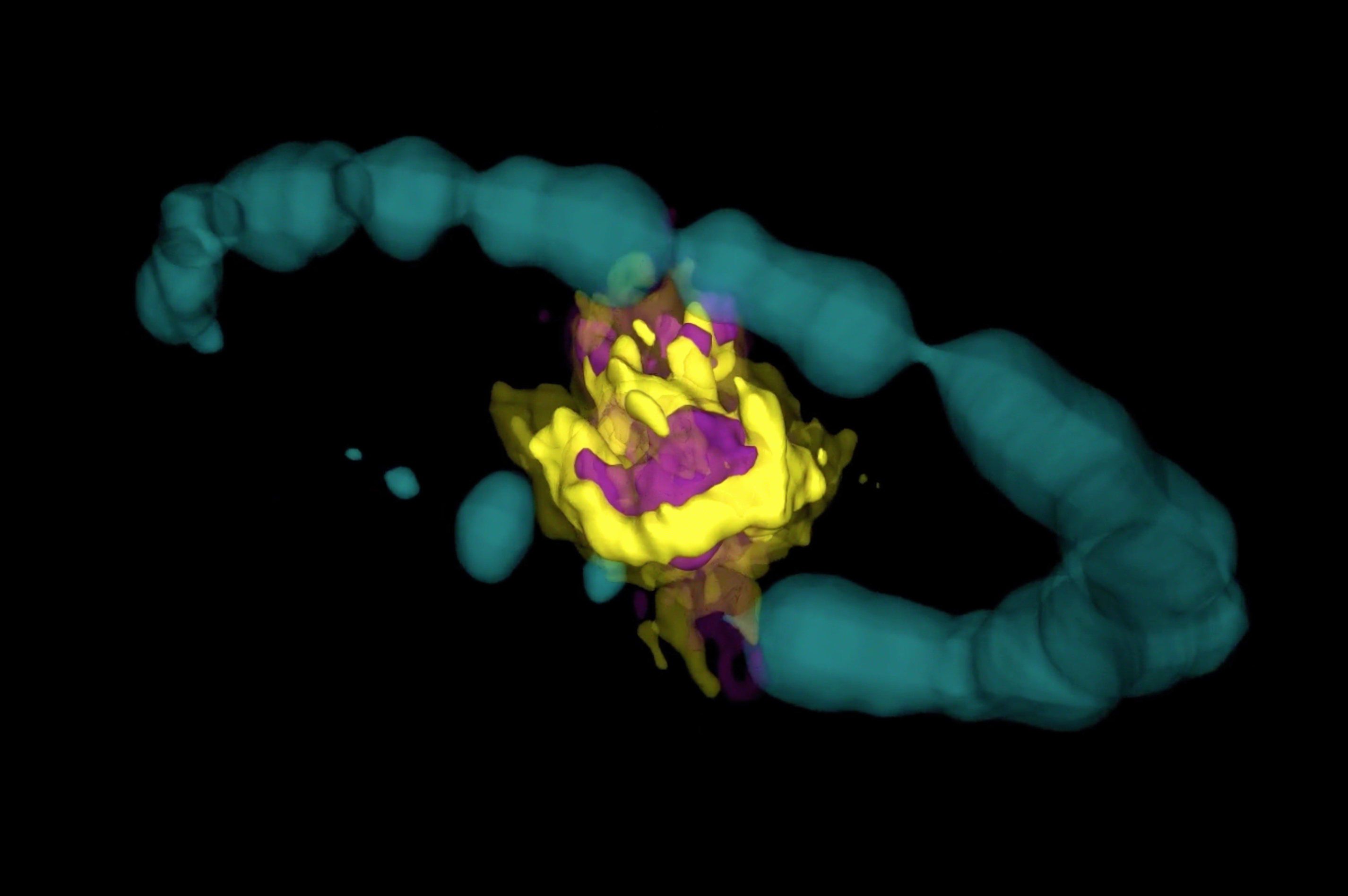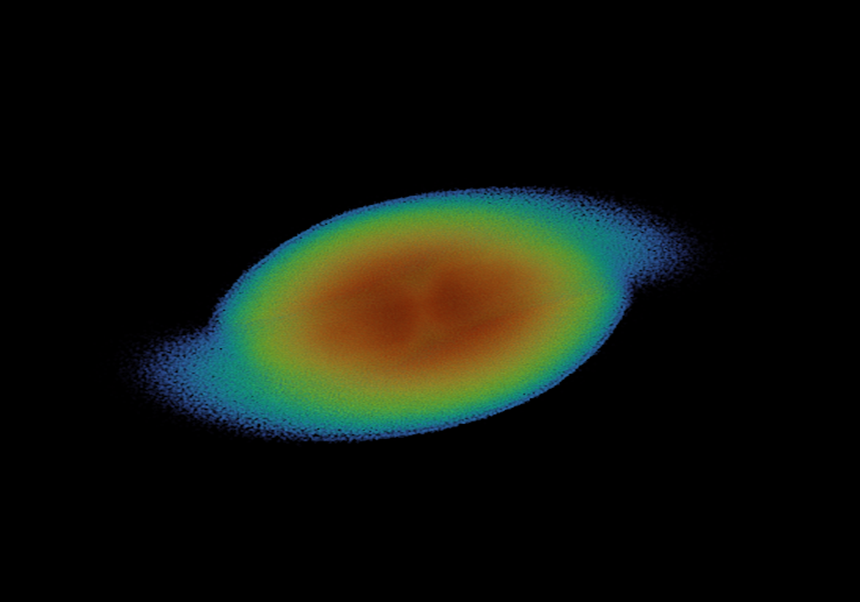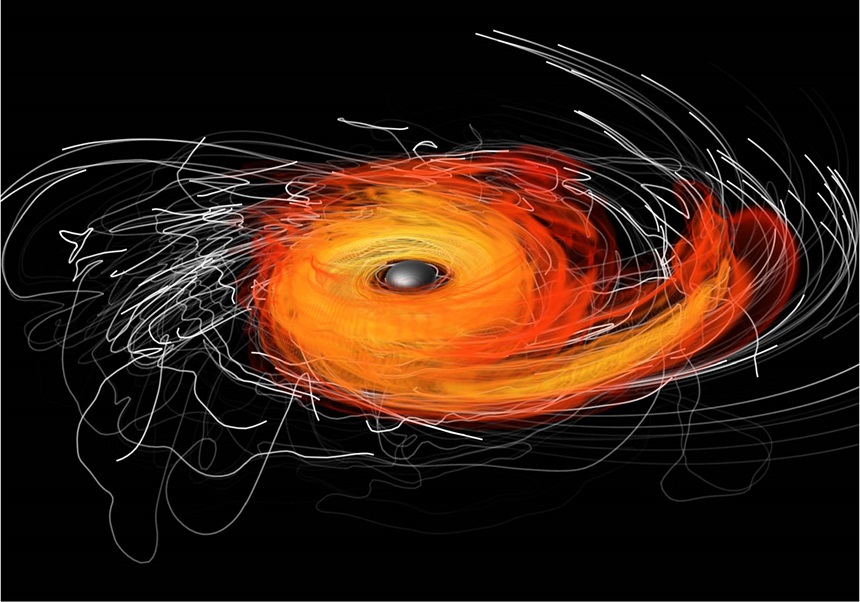
Exposiciones Tesis. El próximo día 14 de febrero, miércoles, a las 11:00 h, en el Salón de Actos de la Biblioteca de Ciencias "Eduard Boscà", tendrá lugar la lectura de la Tesis Doctoral realizada por Francisco Jesús Abellán de Paco, bajo la dirección de los doctores Juan Mª Marcaide Osoro (Catedrático de este departamento) e Iván Martí Vidal (Investigador del Observatorio Epacial de Onsala, Suecia).
ABSTRACT:
This thesis has two very different parts: (1) the study of structures and proper motions in the AGN radio jets of the S5 polar cap sample, by means of VLBI high-precision multi-frequency phase-delay astrometry; and (2) the tomography (i.e., 3D) reconstruction of the molecular emission and kinematics in the inner ejecta of supernova SN 1987A.
In the first part, we report on a differential astrometry analysis for all sources in the S5 polar cap sample. The technique of VLBI high-precision phase-delay astrometry is successfully applied, for the first time, at the frequency of 43 GHz. These astrometric results are compared to those obtained at 15 GHz during the same epoch of observations (year 2010), and also to 15 GHz data collected in a previous epoch (year 2000). The differences in source separations among all the source pairs observed in common at the two epochs are compatible at the 1 sigma level between U and Q bands.
The time interval between observations enables us to achieve precisions in the proper motions of the source cores of a few microarcseconds/year. We study the source-position stability by analyzing the changes in the relative positions of fiducial source points (the jet cores) over a decade. We find motions of 0.1 − 0.9 mas among close-by sources between the two epochs, which imply drifts in the jet cores of approximately a few tens of microarcseconds/year. These results have implications for the standard AGN jet model (where the core locations are supposed to be stable in time).
With the benefit of quasi-simultaneous U/Q band observations in 2010, we make spectral-index maps and study chromatic effects (i.e., core-shift) at the radio source cores using three independent methods. The magnitudes of the core-shifts are of the same order for all methods. However, some discrepancies arise among the methods in the determination of the core-shift orientations. In some cases, these discrepancies are due to insufficient information for the corresponding method to be successfully applied. In others, the discrepancies reflect assumptions of the methods and could be explained by curvatures in the jets and/or departures from conical jets.
In the second part of the thesis, we present the result of a tomography of SN 1987A aimed to determine the morphology of the molecular emission in the innermost regions of remnant. Most massive stars end their lives in core-collapse supernova explosions and enrich the interstellar medium with explosively nucleosynthesized elements. Following core collapse, the explosion is subject to instabilities as the shock propagates outwards through the progenitor star. Observations of the composition and structure of the innermost regions of a core-collapse supernova provide a direct probe of the instabilities and nucleosynthetic products.
SN 1987A in the Large Magellanic Cloud (LMC) is the only supernova for which the inner ejecta can be spatially resolved before it is strongly affected by interaction with the surroundings. Our observations of SN 1987A with the Atacama Large Millimeter/submillimeter Array (ALMA) are of the highest resolution to date and reveal the detailed morphology of the emission of cold molecular gas in the innermost regions of the remnant. The 3D distributions of carbon and silicon monoxide (CO and SiO) emission differ, but both have a central deficit, or torus-like distribution, possibly a result of radioactive heating during the first weeks (“nickel heating”). The size scales of the clumpy distribution are compared quantitatively to models, demonstrating how progenitor and explosion physics can be constrained.
Images:
















